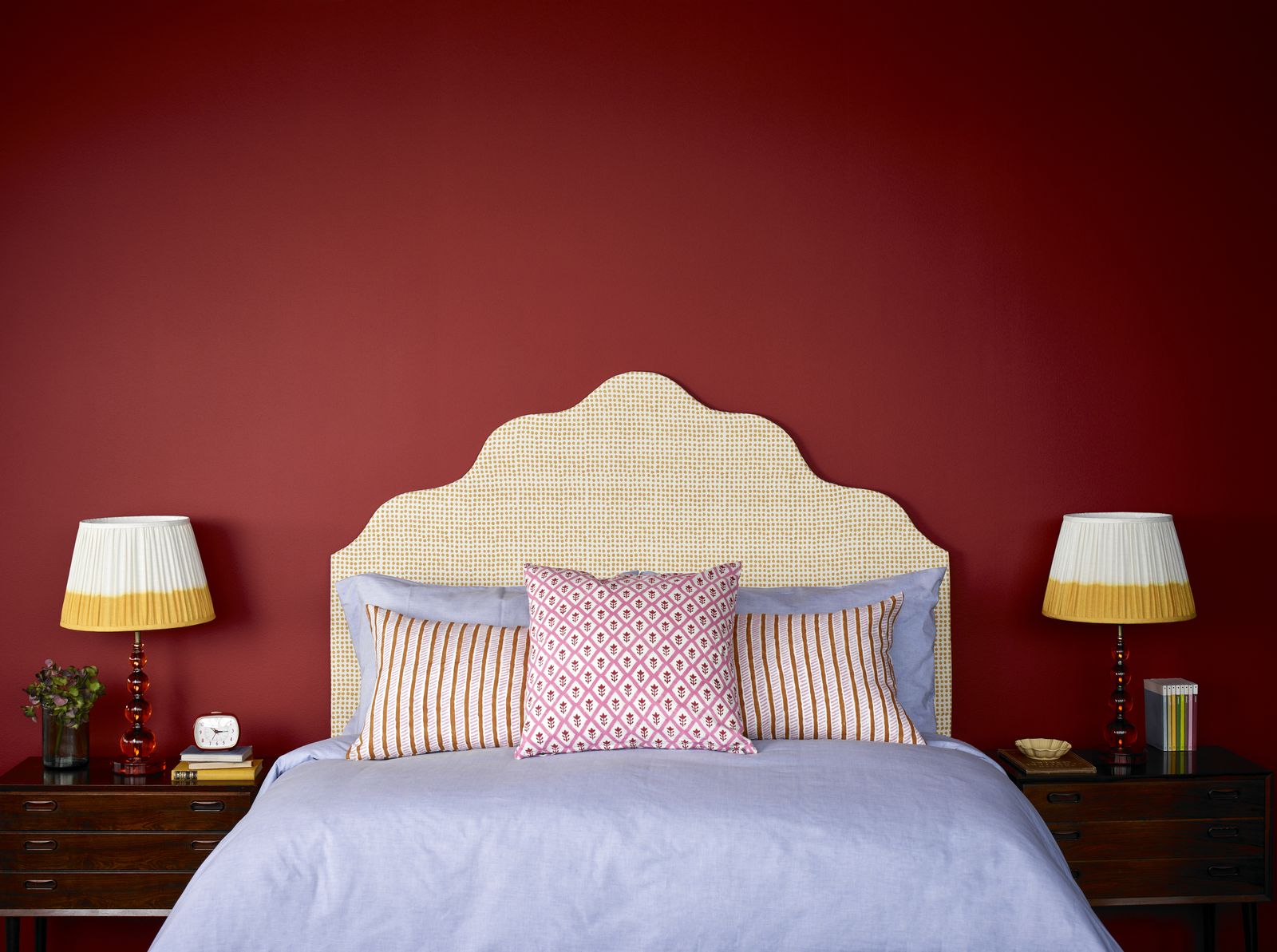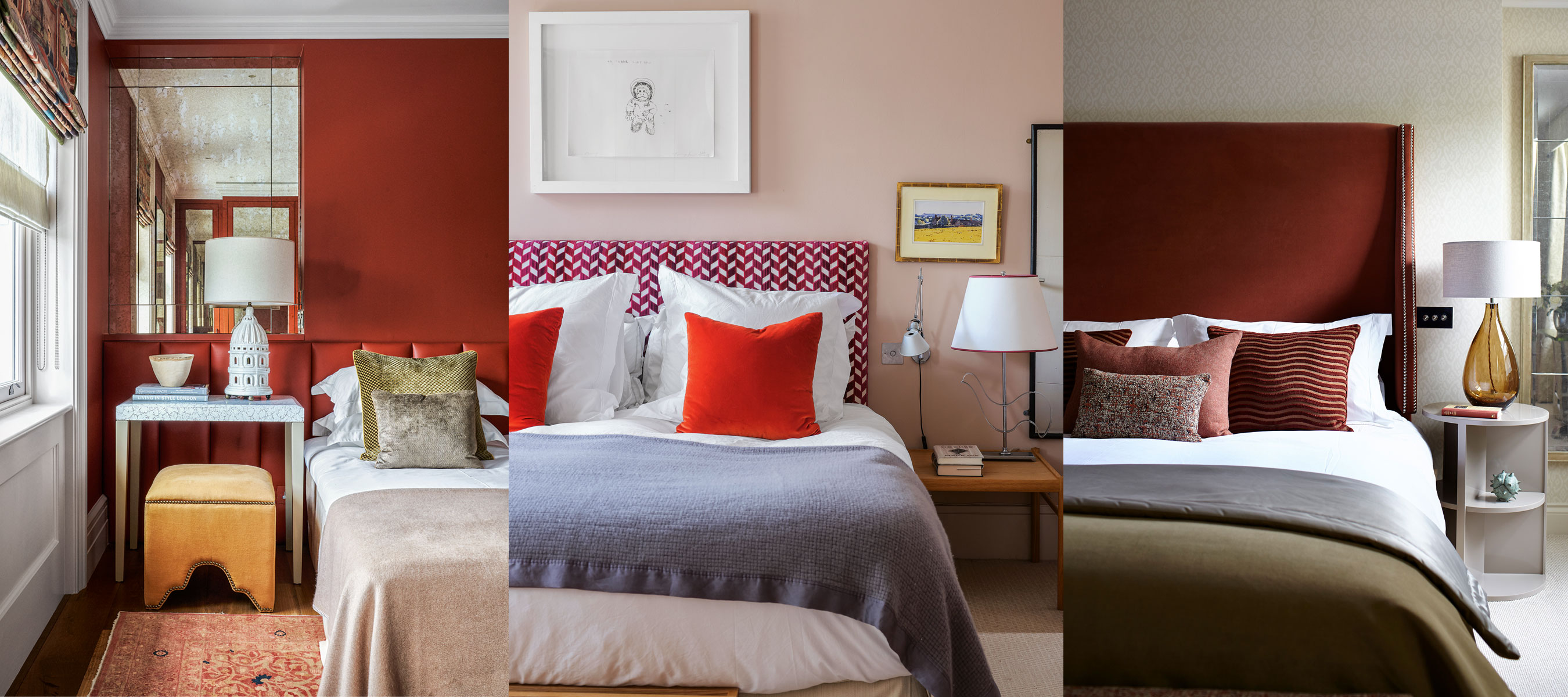Red’s Psychological Impact on Sleep and Mood

Red is a powerful colour that can evoke strong emotions and influence our behaviour. While it’s often associated with passion, energy, and excitement, it can also have a significant impact on our sleep and mood, particularly when used in a bedroom setting.
Red’s Impact on the Nervous System
Red is a stimulating colour that can activate the nervous system, increasing heart rate and blood pressure. This stimulation can make it difficult to relax and fall asleep. Research suggests that exposure to red light before bed can disrupt melatonin production, a hormone essential for regulating sleep cycles. This disruption can lead to sleep disturbances, making it harder to fall asleep and stay asleep throughout the night.
Red and Emotional Responses
Red is often associated with feelings of energy, excitement, and passion. It can trigger a sense of urgency and even aggression in some individuals. While these emotions can be beneficial in certain situations, they are not conducive to a peaceful and restful sleep environment. In a bedroom, red can create a sense of restlessness and make it challenging to unwind after a long day.
Red’s Influence on Sleep Quality and Mood
Studies have shown that exposure to red light in the evening can lead to a decrease in sleep quality. This is because red light suppresses melatonin production, which plays a crucial role in regulating sleep patterns. Additionally, the stimulating nature of red can interfere with relaxation, making it harder to fall asleep and stay asleep. Over time, poor sleep quality can negatively impact mood, leading to increased irritability, anxiety, and even depression.
Red’s Influence on Interior Design and Aesthetics: Is Red A Good Color For A Bedroom

Red’s vibrant energy and bold presence can significantly impact the overall aesthetic and atmosphere of a bedroom, offering a unique opportunity to create a space that reflects personal style and desired mood. Its strategic use can transform a bedroom from a minimalist sanctuary to a dramatic and intimate haven.
Red’s Use in Different Bedroom Styles
Red’s versatility allows it to seamlessly integrate into diverse bedroom styles, each with its own distinct aesthetic.
- In minimalist bedrooms, red is often used sparingly as an accent colour, adding a pop of vibrancy to a predominantly neutral palette. A red throw pillow, a statement artwork, or a single red lamp can create a focal point without overwhelming the space.
- Traditional bedrooms often embrace a richer and more layered approach to colour, where red can be incorporated through patterned textiles, antique furniture, or bold wallpaper. The use of red in traditional bedrooms often evokes a sense of warmth and history.
- Modern bedrooms, known for their clean lines and minimalist aesthetics, often incorporate red as a bold accent colour. A red accent wall, a vibrant rug, or a geometric print with red accents can add a touch of drama and personality to a modern space.
Strategic Incorporation of Red Accents
Red accents can be strategically incorporated to create a focal point or enhance existing design elements.
- An accent wall painted in a vibrant shade of red can instantly transform a bedroom, drawing attention and creating a sense of depth and dimension.
- Red artwork, such as paintings, sculptures, or photographs, can add a touch of personality and create a focal point in a bedroom. A large red painting can act as a statement piece, while smaller red artworks can be grouped together to create a gallery wall.
- Red furniture, such as a headboard, a chaise lounge, or a dresser, can add a touch of luxury and sophistication to a bedroom. A red headboard can be a striking focal point, while a red chaise lounge can create a cozy and inviting space for reading or relaxing.
- Red textiles, such as curtains, rugs, throws, or pillows, can add warmth and texture to a bedroom. Red curtains can add a dramatic touch to a bedroom, while red throws and pillows can create a cozy and inviting atmosphere.
Creating a Sense of Warmth, Intimacy, or Drama
Red’s versatility allows it to be used to create a sense of warmth, intimacy, or drama in a bedroom, depending on the chosen shade and its strategic integration.
- Warm red hues, such as terracotta or rust, can create a sense of warmth and comfort, reminiscent of a cozy fireplace or a sunset.
- Deep red hues, such as burgundy or crimson, can create a sense of intimacy and luxury, perfect for a romantic getaway or a space designed for relaxation and rejuvenation.
- Bright red hues, such as scarlet or vermillion, can create a sense of drama and energy, perfect for a bedroom that is designed to inspire creativity and passion.
Red’s Impact on Personal Preferences and Individuality

The perception of red as a suitable colour for a bedroom is deeply influenced by individual preferences and cultural backgrounds. While some individuals may find red stimulating and energising, others may perceive it as overwhelming and disruptive to sleep. This section explores how personal tastes and cultural nuances shape opinions on the use of red in bedrooms.
Cultural Influences on Red’s Suitability for Bedrooms
Cultural associations play a significant role in shaping perceptions of colour. In many cultures, red is associated with passion, energy, and excitement, making it a popular choice for living rooms or dining areas. However, in other cultures, red is linked to danger, aggression, or even mourning, making it less desirable for a space intended for relaxation and sleep. For example, in Chinese culture, red is considered a lucky colour and is often used during celebrations, while in some African cultures, red is associated with royalty and power. These cultural associations can influence how individuals perceive the suitability of red for a bedroom.
Designing a Bedroom with Red as a Primary Colour, Is red a good color for a bedroom
Incorporating red effectively in a bedroom requires careful consideration of its intensity and application. A well-designed red bedroom can be both stylish and inviting, while an overdone approach can create a jarring and overwhelming environment. Here are some strategies for incorporating red effectively:
- Use Red as an Accent Colour: Red can be used as a focal point by incorporating it in smaller doses, such as a statement headboard, throw pillows, or artwork. This approach allows red to add a pop of colour without dominating the space.
- Choose a Soft or Muted Red: For a more calming effect, opt for softer shades of red, such as terracotta, brick, or burgundy. These muted tones offer a warm and inviting feel without being overly stimulating.
- Balance Red with Neutral Tones: To create a harmonious space, pair red with neutral colours like white, cream, or grey. These colours provide a backdrop that allows red to shine while preventing it from becoming overpowering.
Creating a Unique and Personalised Bedroom Space with Red
Red can be used to create a unique and personalised bedroom space that reflects the individual’s personality and style. Here are some examples:
- A Bold and Energetic Space: For those who love bold colours and a stimulating atmosphere, red can be used as the dominant colour, creating a vibrant and energetic space. This can be achieved by painting the walls red, incorporating red furniture, and using red accessories.
- A Romantic and Intimate Space: Red can also be used to create a romantic and intimate atmosphere. Soft shades of red, such as rose or crimson, can be paired with luxurious textures, such as velvet or silk, to create a sensual and inviting space.
- A Modern and Chic Space: Red can also be incorporated into a modern and chic bedroom by using it as an accent colour against a neutral backdrop. This approach allows red to add a touch of personality without being overpowering.
